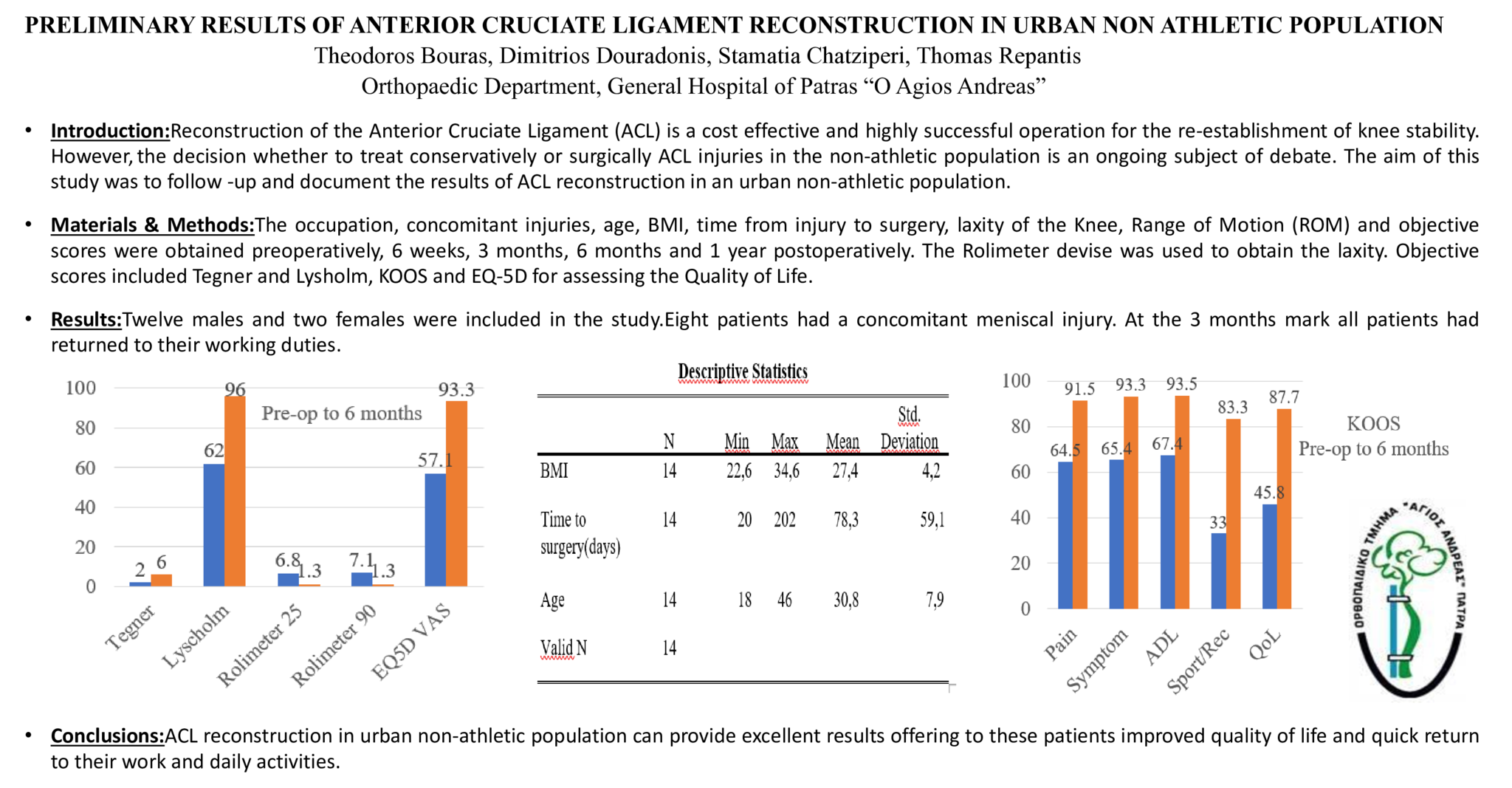Introduction
Reconstruction of the Anterior Cruciate Ligament (ACL) is a cost effective and highly successful operation for the reestablishment of knee stability. However, the decision whether to treat conservatively or surgically ACL injuries in the non-athletic population is an ongoing subject of debate.
Aim
The aim of this study is to follow -up and document the results of ACL reconstruction in an urban non-athletic population.
Materials & Methods
The occupation, concomitant injuries, age, BMI, time from injury to surgery, laxity of the Knee, Range of Motion (ROM) and objective scores were obtained preoperatively, 6 weeks, 3 months, 6 months and 1 year postoperatively. The Rolimeter devise was used to obtain the laxity. Objective scores included Tegner and Lysholm, KOOS and EQ-5D for assessing the Quality of Life.
Results
Twelve males and two females were included in the study. The mean values for age, BMI and time from injury to surgery were 30.8 +/- 7.8 years , 27.3 +/- 4.2 kgs , 78.3 +/- 59 days respectively. Eight patients had a concomitant meniscal injury. At the 3 months mark all patients had returned to their working duties. Mean Tegner score improved from 2 to 6 at the 6 months mark. The mean Lysholm score was 62 +/-22 preoperatively and 96 +/- 3 at 6 months. Al modules of the KOOS improved significantly 6 months following surgery. Rolimeter measurements at 25 and 90 degrees improved from 6.8 +/- 2.5 mm and 7.1 +/- 2.6 to 1.3 +/- 1 mm at 6 months. The EQ5D VAS improved from 57.1 +/- 26.5 to 93.3 +/- 7.5 within 6 months from surgery.
Conclusions
ACL reconstruction in urban non-athletic population can provide excellent results offering to these patients improved quality of life and quick return to their work and daily activities.
- 12 προβολές






